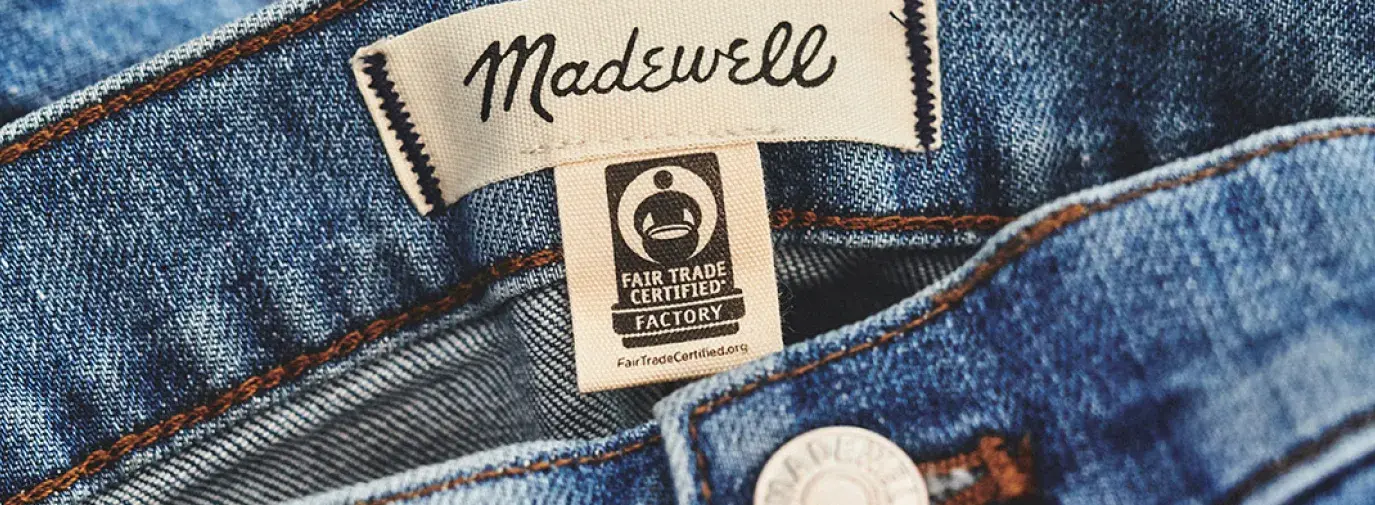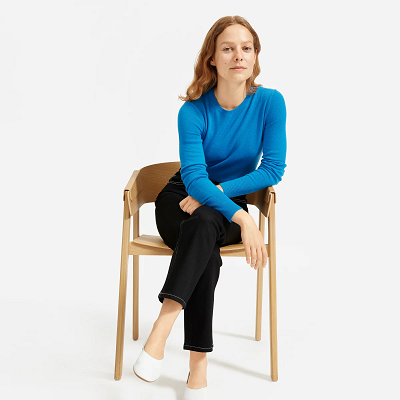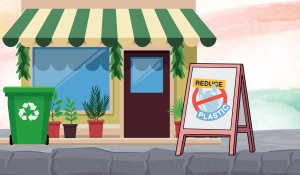
Finally, it’s not hard to find green and ethical clothing in mainstream stores any more. While it’s a great thing that fair trade and sustainable fabrics are in front of millions of shoppers, green claims are worth checking out. Green America looked into popular brands with “green” offerings, Madewell, Target, Everland, and H&M to see if they are truly green or just greenwashing.
Fair Trade at Madewell and Target
You can get a pair of jeans for around $130 from Madewell’s Fair Trade Certified line. Madewell is owned by J.Crew, which got one of our lowest scores on Green America’s Toxic Textiles Scorecard because of its lack of transparency in its sustainability and labor policies—if it has policies on those issues, it’s keeping them a secret.
Target’s Fair Trade Certified jeans cost around $40 a pair. Target was the top-rated company in Green America’s Toxic Textiles report, because it clearly reports its environmental and social policies and shares its progress in most of the categories we looked at. Unfortunately, one of the areas where we found it fell short was in factory safety reporting.
Both Madewell’s and Target’s denim lines hold the Fair Trade Factory Certified label from Fair Trade USA. Unfortunately, the label may not be as strong as customers think, partly because it only certifies the factory where the garments are sewn, not where cotton is grown, dyed, or woven. Labor and environmental abuses occur frequently lower in the supply chain. By not verifying those conditions, companies leave themselves open to the risk of profiting off of human and environmental exploitation.
Anna Canning, campaigns manager at Fair World Project, a fair trade watchdog agency, explains that the Fair Trade Certified factories are inspected once a year and even those workers rarely take home a living wage.
Even companies that have a strong record on organic and recycled materials, like Pact Apparel and Patagonia, both produce clothes using this certification, instead of a stronger one like Fairtrade America or Fairtrade International. Unfortunately, those labels are more likely to be found on chocolate bars or bananas than clothing in US stores. So, when it comes to fashion, a good label to look for is GOTS Certified, as it addresses organic content, added chemicals, and labor through the production of a garment (though not including the harvesting of any crops).
And when it comes to buying denim, your best bets are buying used or from truly green companies; see the end of the article to learn how to identify those green companies. You can read more about what truly fair trade supply chains look like in “From Fast to Fair Fashion."
Radically Transparent Everlane
Everlane came onto the ethical clothing scene in 2010 and has gained popularity with its tagline, “radical transparency.” It’s rare for customers to see supply chain information next to sizes and price—with each product, you can click through a series of links to learn about the factories where the piece is produced.
But what you end up learning isn’t quite “radical.” For example, it identifies the factory where a cashmere sweater was made, but gives no information about workers’ pay, nor of the practices used by farmers that raise the goats needed to create the textile; it says only that the cashmere comes from Mongolia.
Even though Everlane emphasizes on paper the importance of good craftsmanship and timeless pieces, Good on You says “Everlane fails to live up to its own hype.” Everlane has not adopted any meaningful standards like fair trade, organic, or others. Everlane declined to comment on its knowledge of farmers working down the supply chain in cashmere and cotton. The company also does not disclose its supplier code of conduct or its sustainability policies, which leaves consumers unable to compare it to other
companies. In short, its transparency is radically underwhelming.

Eco-Conscious H&M
Each piece in H&M’s Conscious collection includes at least some organic cotton, recycled polyester, or Tencel. Paired with the brands’ in-store clothing recycling program, H&M might be looking pretty green; but these programs aren’t indicative of H&M as a
whole. Only 0.1 percent of donations to its in-store recycling boxes are recycled into new textiles, admitted Henrik Lampa, H&M’s Development Sustainability Manager in 2016.
H&M’s business model is to keep people coming back into stores often for inexpensive clothes—to do that, it brings cheap new looks into stores about every other day, which satisfies customers’ tastes for novelty. It’s a wasteful model—after the 2017 holiday season, H&M reported it had an inventory of unsold clothing worth $4.3 billion.
The Clean Clothes Campaign included H&M in its 2019 Tailored Wages report and found that it was not paying its factory workers down the supply chain enough to pay for basic needs such as housing, health care, food, and education for children. In fact, none of the 20 global brands assessed in the report were paying a living wage.
“H&M’s constant demand for new fashions pushes unrealistic production times on suppliers, all while asking for extraordinarily low prices for those products,” says Charlotte Tate, labor justice campaigns manager at Green America. “Workers and our planet end up bearing the brunt of this unsustainable model.”
Finding Truly Green Clothing
The moral of this story is to check out company claims. When it comes to finding truly green products, clothing or anything else, the key is to do your research and ask questions. A great place to start is with the clothing section at GreenPages.org, where you can find businesses that have gone through Green America’s rigorous certification program and are Certified Green Businesses. The most sustainable garments are those that last a long time, so consider buying secondhand and higher quality new items to make the most of every piece.
Resources for fact-checking greenwashing
When you walk into a store or find yourself on a website where things seem to have “green marketing,” it’s a good idea to do a little research for yourself.
Step 1: Look closely at the label and tags or online listing for the product. Does it back up claims like “natural” or “sustainable” with certifications or explanations?
Step 2: If you’re not already online, pull up the brand’s website. Look around for a sustainability page. On that page, do they identify specific processes, or just speak vaguely about valuing people and/or planet?
Step 3: If you’re coming up short or only finding vague information, look deeper. This article was informed by knowledge gained in creating our 2019 Toxic Textiles Report, which includes a scorecard rating 20 top companies selling clothes in the US based on what they are doing to protect the environment and treat people well. Other sources shoppers can use to investigate green or fair claims are Fashion Revolution’s Fashion Transparency Index or the Clean Clothes Campaign’s Tailored Wages report.
The website and app Good On You has a database with rankings for clothing and shoe brands on a five-point scale, from “We Avoid” to “Great” based on company policies/practices regarding the environment, labor, and use of animal products.
Of course, GreenPages.org includes only Green Business Network members certified through Green America’s rigorous process, which you can learn about here.







